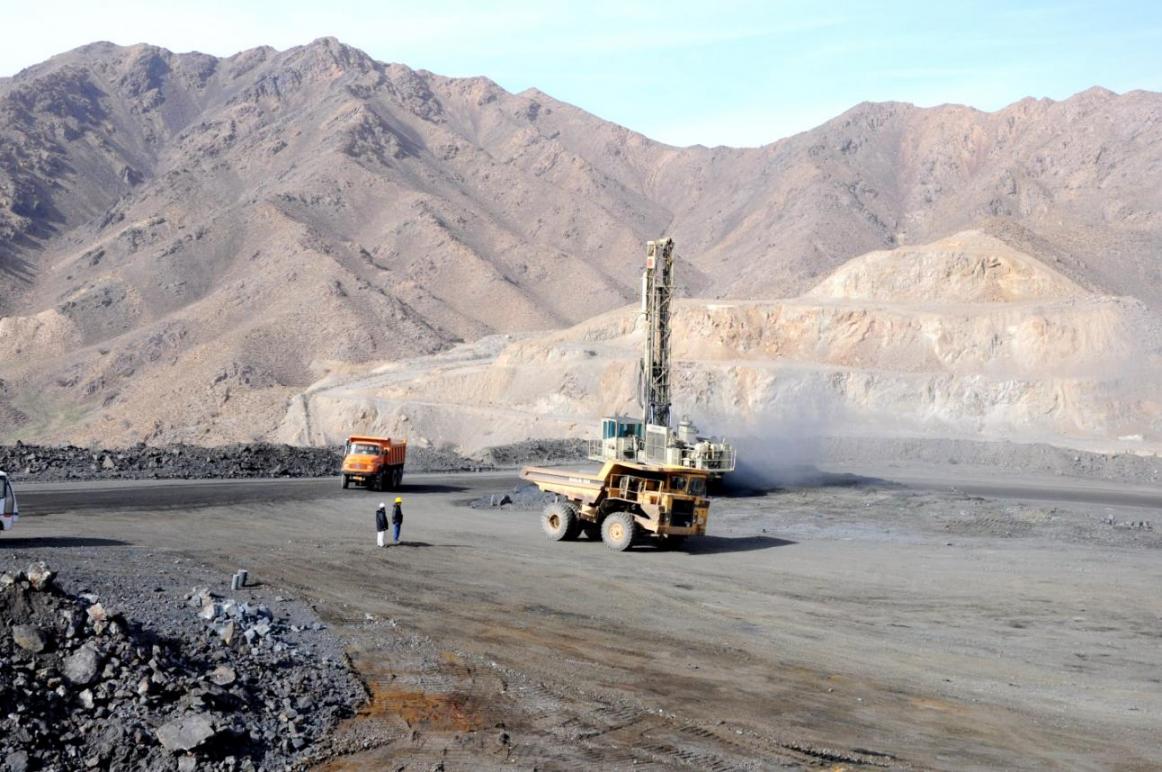Exploration operations carried out on 12,000 square kilometers of Sangan region in Khorasan Razavi Province have led to the discovery of 3 billion metric tons of mineral deposits, deputy head of the Geological Survey of Iran (GSI), Behrouz Borna announced on Sunday, IRNA reported.
The explorations in the northeastern province were conducted mainly through aerial surveys based on a trilateral agreement between the ministry of industry, mine, and trade, the GSI and the Iranian Mines and Mining Industries Development and Renovation Organization (IMIDRO), said the official, speaking at the 33rd national annual conference on geosciences.
Referring to the explorations as a way to reduce dependence on oil exports, Borna said excavating more than 7,500 square meters of the areas and digging 18 deep boreholes has led to the discovery of iron, zinc, lead, copper and gold reserves in Sangan region.
So far, only 7% of the country's soil has been explored and the discovered mineral reserves are estimated to be worth $770 billion, according to deputy chairman of Iran Mine House, Mohammad-Reza Bahraman. Iran has around 60 billion tons of mineral reserves, over 37 billion tons of which are proven reserves.
The mining sector accounts for more than 32% of the country's non-oil exports, Bahraman reiterated, adding that more than 30% of the stock market value is from the mining and mineral processing sector.
According to Bahraman, a large portion of the country's area has not yet been scientifically explored due to lack of technical knowledge and facilities. Officials are working to address the shortcomings in this area, one example being the recent memorandum of understanding (MoU) signed between the IMIDRO and the Iranian Society of Mining Engineering (IRSME).
The MoU is aimed at promoting research and development and improving engineering knowledge in the mining sector. The MoU will also assist the mining companies in commercializing their innovations and adopting new management techniques.
Since the current administration came to power in 2013, IMIDRO, as the major state-owned holding company active in the mining sector, has concentrated its efforts on exploring the maximum potential in the mining sector. The organization has managed to absorb huge investments from the private sector to start new mining projects and help restart the projects which were abandoned for many years during former president Mahmoud Ahmadinejad's tenure. IMIDRO also initiated a national project to explore 200,000 square kilometers of the country, mainly in the eastern areas, for new mineral resources.
Development the Entire Production Chain
In order to meet the goals set in the country's 2025 Vision Plan, at least 55 million tons of crude steel should be produced annually, which requires special attention towards the development of the entire steel production chain including exploration, extraction and processing the iron ore mines to produce iron ore pellets and iron ore concentrate, and producing sponge iron (DRI) which are the raw materials used in the production of steel. IMIDRO's efforts have so far led to absorption of $17 billion finances from the domestic and foreign investors as well as creating direct employment for 70,000 people.
"Investing in R&D is a top priority for our organization. We are authorized by law to spend as much as 25% of our profits in research and education activities. In the first three quarters of the current Iranian year (to end March 20), we spent 120 billion rials ($4.3 million based on official exchange rate) on R&D," chairman of the IMIDRO executive board and deputy minister of industry, mine, and trade, Mehdi Karbasian, said after signing the MoU with the IRSME.
A great advantage for Iran’s mining sector is that many countries, particularly the developed ones, are gradually running out of mineral reserves; whereas due to lack of sufficient exploration operations in the past, Iran still has a lot to discover.
Availability of abundant energy resources, educated labor force, suitable infrastructure for industrial and mining activities, and incentives offered by the government for foreign investors especially in free economic zones across the country are viewed as other advantages. Iran has 68 types of minerals, making it the tenth country in terms of mineral variety and the 15th in terms of quantity of explored minerals.


